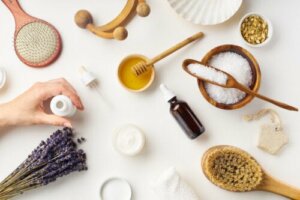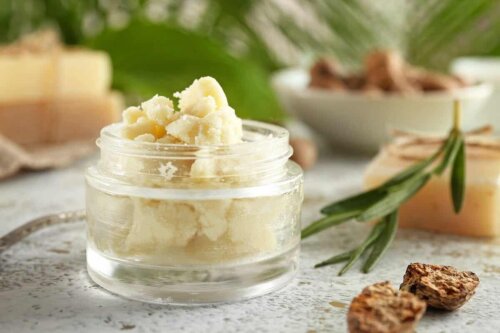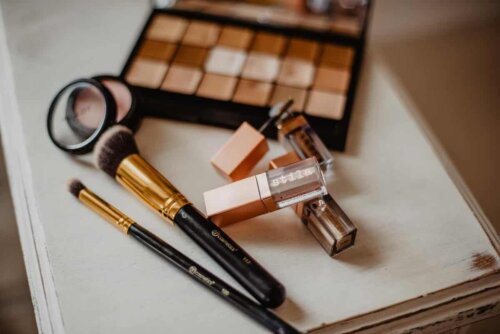The Most Common Makeup Ingredients

Attenuating imperfections, mattifying complexion, and lengthening eyelashes are just some of the attributes of some common makeup ingredients. However, some of these products work better than others and this is due to their formula.
Many types of makeup have come onto the market since the boom of this industry and there’s everything from all-natural ingredients to chemical substances. Furthermore, the industry has more regulations to adhere to and so there are fewer risks of a skin condition these days.
There’s a wide variety of cosmetics on the market, basically, the most common makeup ingredients are emulsifiers, preservatives, water, perfume, thickening agents, moisturizers, and pigments.
Common makeup ingredients
Let’s see, then, which ingredients are the most common ones in makeup. Note that the order here isn’t tied to their contained proportion.
Alcohol
The main function of this substance is to ease the spreadability of the product over the skin. It also serves as an emulsifier. That is, it allows the other substances in the cosmetic to blend together.
Oils are a common ingredient in makeup
This is one of the ingredients in makeup that gives softness and shine to the formula. The most common oils are lanolin and petrolatum. On the natural side, there’s olive oil, castor oil, coconut butter, macadamia oil, and shea butter.
Note that oils of natural, ecological, or organic origin are gaining strength in cosmetic formulas. For example, jojoba oil acts as a moisturizer and cellular renewer.

Fragrances
This ingredient hides the scent of some chemicals. However, it’s one of the substances that causes the most allergies and skin irritations. This is why many cosmetics are now “hypoallergenic” and don’t contain fragrance.
These odorants may appear on a cosmetic label under the names isoeugenol, cinnamaldehyde, eugenol, or hydroxycitronellal.
Check out these Five Tips to Look Good without Makeup
Parabens are common ingredients in makeup
Parabens and benzoyl peroxide are chemicals that help preserve makeup ingredients, preventing fungus from forming or bacteria from growing.
These products are linked to breast cancer and also mimic estrogen, and so several countries placed a ban on them. Furthermore, a study published in 2005 in Critical Reviews in Toxicology determined that this component may pose risks to human health when there’s daily exposure to it.
Titanium dioxide
This natural mineral absorbs and blocks ultraviolet (UV) exposure. This sunscreen has led to considerable debate because its nanoparticles can deeply penetrate the skin.
Waxes
Beeswax, candelilla, and carnauba wax are common in lipsticks as texturizers. They also function as barrier agents in makeup.
Find out how to Make Your Own Reusable Makeup Remover Pads
Moisturizers are common ingredients in makeup
Hyaluronic acid is one of the most sought-after ingredients because it slows dermal aging and deeply moisturizes. Similarly, glycerin is another moisturizer commonly used due to its ability to absorb moisture and keep it in the skin.
Vitamins
Tocopherol or vitamin E is a compound that protects the skin from free radicals and is an antioxidant. In addition, vitamin A or retinol minimizes expression lines while smoothing the face.
Other essential vitamins are C, a powerful antioxidant that rebuilds collagen fibers, and B5 or panthenol, a rather valuable moisturizer.
Composition of the common ingredients in makeup
You now know the list of the most common makeup ingredients. However, you still need to know their usual formats on the market. Let’s take a look at some of them.
Makeup bases
Foundations come in cream, liquid, or lotion form. They’re ideal for attenuating wrinkles and improving the appearance of the skin. In addition, their main ingredient is water and silicone compounds, to which companies may also add emollients, vitamins, or sunscreens.
Water-based foundations work well in people with normal or oily complexions, as they contain 50-60% water. Also, oil foundations contain more oily substances and are ideal for dry skin.
Lipsticks
As mentioned above, wax is the ingredient that gives lipstick shape and consistency. Moreover, this product can include alcohol, oil, color pigments, and moisturizers in its formula.

Shades
Mica (minerals) or talc gives softness to this type of cosmetic. In fact, these enhance the color, shimmer, and shading that comprise the other key components of eyeshadows.
Mascara
This is usually made from water, waxes, and silicones. Also, it often contains polymers and, in some cases, fibers that create a lengthening effect. Furthermore, the black and brown colors usually derive from iron oxides.
Consumers guide the use of ingredients in the makeup industry
Finally, the composition of every cosmetic product varies from brand to brand. Added to this are market trends; cruelty-free (not tested on animals), makeup that uses raw materials of natural origin, or hypoallergenic. (The latter is less likely to cause allergies or irritation.)
Some compounds are attracting more consumer attention than others as people are increasingly demanding higher quality, healthier ingredients.
All cited sources were thoroughly reviewed by our team to ensure their quality, reliability, currency, and validity. The bibliography of this article was considered reliable and of academic or scientific accuracy.
- F Carrasco. Diccionario de ingredientes cosméticos [Internet].Málaga: Imagen Personal 4ta edición; 2009 [consultado marzo 2021]. Disponible en: https://books.google.com.co/books?hl=es&lr=&id=B3DlzBC0_UQC&oi=fnd&pg=PT5&dq=ingredientes+cosmeticos&ots=3CIPuf7Txe&sig=nWXItntTgu63HgRiBT-BCJyVNTg&redir_esc=y#v=onepage&q=ingredientes%20cosmeticos&f=false
- Julie Gabriel. The Green Beauty Guida [Internet]. Deerfield Florida: Healt Communications Inc; 2008 [consultado marzo 2021]. Disponible en: https://books.google.com.co/books?hl=es&lr=&id=F4WjAgAAQBAJ&oi=fnd&pg=PR1&dq=natural+makeup&ots=yp4FmO3KcT&sig=3PFUstLoTT07u2lNc3r-zFJdUxA&redir_esc=y#v=onepage&q=natural%20makeup&f=false
- Golden, Robert, Jay Gandy, and Guenter Vollmer. “A review of the endocrine activity of parabens and implications for potential risks to human health.” Critical reviews in toxicology 35.5 (2005): 435-458.
This text is provided for informational purposes only and does not replace consultation with a professional. If in doubt, consult your specialist.








